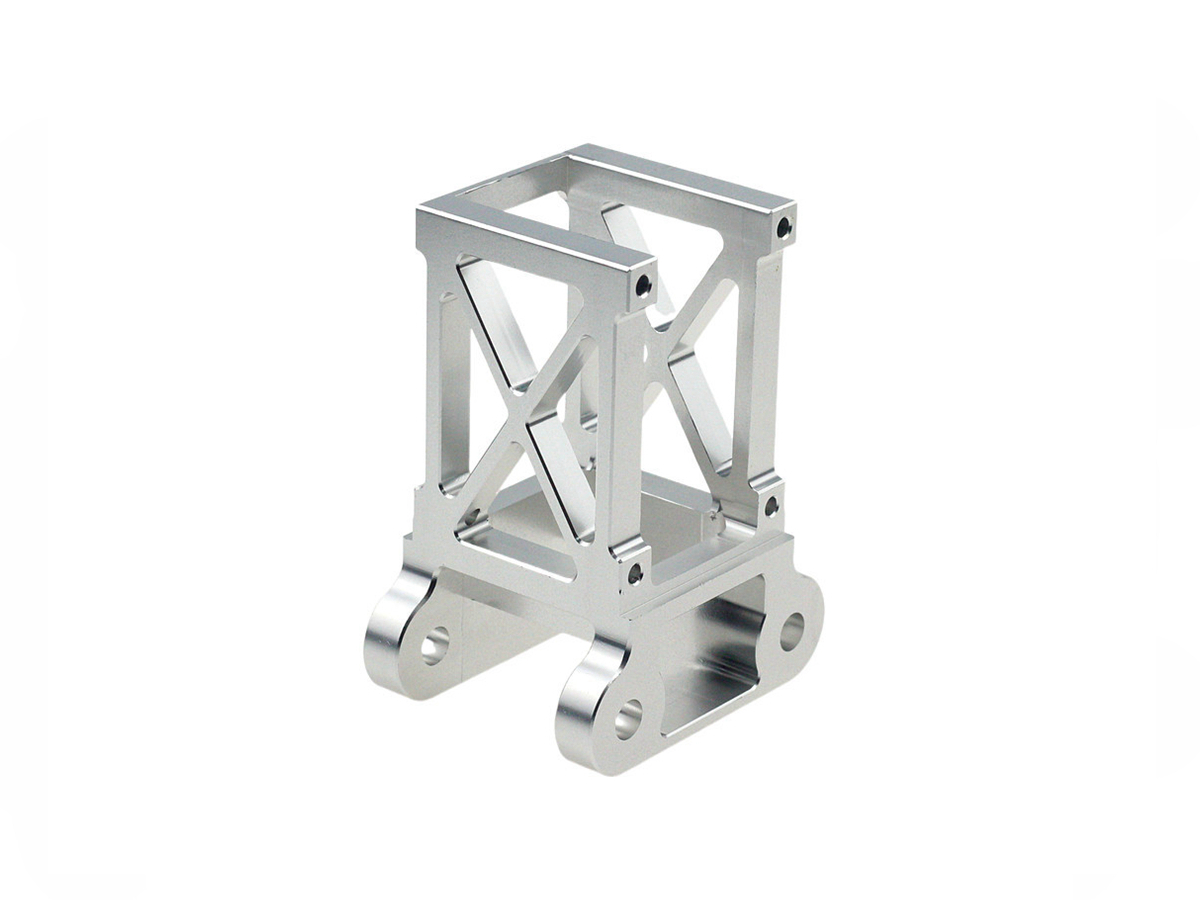Durable CNC Machined Components for Automotive Chassis and Systems
Introduction to CNC Machined Automotive Chassis Components
Automotive chassis and systems demand components with superior durability, precision, and structural integrity to withstand constant stress, vibration, and environmental challenges. Advanced CNC machining provides precise fabrication of critical automotive parts such as suspension mounts, subframes, steering knuckles, control arms, and cross-members. Preferred materials include high-strength alloys like aluminum 6061, steel alloys (4130, 4340), and corrosion-resistant stainless steels (SUS304, SUS316).
Expert CNC machining services ensure automotive chassis components meet stringent safety standards, precise tolerances, and consistent reliability under demanding operational conditions.
Material Performance Comparison for Automotive Chassis Parts
Material | Tensile Strength (MPa) | Density (g/cm³) | Fatigue Resistance | Typical Applications | Advantage |
|---|---|---|---|---|---|
310-345 | 2.70 | Excellent | Suspension components, chassis brackets | Lightweight, high corrosion resistance | |
560-670 | 7.85 | Outstanding | Frame structures, control arms | High strength, good weldability | |
745-1080 | 7.85 | Exceptional | Steering knuckles, subframes | Superior strength and fatigue resistance | |
515-620 | 8.00 | Excellent | Chassis fittings, corrosion-prone parts | Excellent corrosion resistance |
Material Selection Strategy for Automotive Chassis Parts
Selecting the ideal material for CNC machined chassis components involves assessing mechanical strength, fatigue resistance, weight considerations, and corrosion resistance:
Aluminum 6061-T6 is ideal for lightweight chassis brackets and suspension mounts, offering tensile strength up to 345 MPa, excellent corrosion resistance, and significant weight savings.
Alloy Steel 4130 offers a balanced combination of high strength (670 MPa), good weldability, and excellent fatigue resistance, making it suitable for control arms and structural frame parts.
Alloy Steel 4340 provides exceptional tensile strength (up to 1080 MPa), toughness, and fatigue resistance, crucial for highly stressed parts like steering knuckles and subframes.
Stainless Steel SUS304 is best for components exposed to harsh environmental conditions due to its high corrosion resistance, good strength (620 MPa), and durability, suitable for chassis fittings and fasteners.
CNC Machining Processes for Automotive Chassis Components
CNC Machining Process | Dimensional Accuracy (mm) | Surface Roughness (Ra μm) | Typical Applications | Key Advantages |
|---|---|---|---|---|
±0.01-0.02 | 0.8-1.6 | Suspension brackets, subframe mounts | Versatile, consistent accuracy | |
±0.005-0.01 | 0.4-1.2 | Axles, steering shafts | High rotational precision | |
±0.005-0.01 | 0.4-0.8 | Complex chassis parts, steering knuckles | Precise complex geometries | |
±0.01-0.02 | 0.8-3.2 | Mounting holes, structural frames | Efficient, accurate hole production |
CNC Process Selection Strategy for Automotive Chassis Components
Choosing appropriate CNC machining processes ensures chassis components meet automotive industry demands:
Precision CNC Milling is suitable for producing brackets and mounts with consistent dimensional accuracy (±0.01–0.02 mm), essential for reliable assembly and structural integrity.
CNC Turning provides precise rotational accuracy (±0.005–0.01 mm) crucial for axles, steering columns, and cylindrical chassis components.
Multi-Axis CNC Machining excels at producing intricate chassis parts like steering knuckles and control arms, maintaining precise tolerances (±0.005 mm) essential for high-performance automotive applications.
CNC Drilling offers accurate hole positioning and dimensional consistency (±0.01–0.02 mm), vital for structural frame parts and secure mounting assemblies.
Surface Treatment Performance Comparison for Chassis Components
Treatment Method | Surface Roughness (Ra μm) | Wear Resistance | Corrosion Resistance | Surface Hardness | Typical Applications | Key Features |
|---|---|---|---|---|---|---|
0.4-1.0 | Excellent | Excellent (≥1000 hrs ASTM B117) | HV 400-600 | Aluminum brackets, suspension parts | Durable surface, enhanced corrosion protection | |
1.0-2.0 | Good | Very Good (≥800 hrs ASTM B117) | Unchanged | Steel frames, mounts | Improved corrosion protection, excellent primer | |
0.8-1.6 | Moderate | Good (≥200 hrs ASTM B117) | Unchanged | Steel chassis components | Economical corrosion resistance, aesthetic finish | |
0.6-1.2 | Excellent | Excellent (≥1000 hrs ASTM B117) | Variable | Structural frames, visible chassis parts | Durable, aesthetic, robust corrosion protection |
Surface Treatment Selection for Chassis Applications
Optimal surface treatments enhance chassis component durability and corrosion protection:
Anodizing provides excellent corrosion resistance (≥1000 hrs ASTM B117) and surface hardness (HV 400-600), ideal for aluminum chassis parts.
Phosphating significantly improves corrosion protection (≥800 hrs ASTM B117) and adhesion for paint coatings suited for steel structural frames and mounts.
Black Oxide Coating offers economical corrosion resistance (≥200 hrs ASTM B117) and aesthetic finishing for internal steel chassis components.
Powder Coating delivers robust corrosion protection (≥1000 hrs ASTM B117), high durability, and appealing aesthetics for visible chassis structures.
Typical Prototyping Methods for Automotive Chassis Components
CNC Machining Prototyping: Delivers precision prototype components with tolerances ±0.01 mm, essential for validating designs and ensuring reliable performance under automotive load conditions.
Rapid Molding Prototyping: Quickly produces functional prototypes for real-world mechanical testing, effectively simulating production-grade chassis parts.
Metal 3D Printing (Powder Bed Fusion): Creates complex chassis prototypes rapidly (±0.05 mm accuracy), enabling early design optimization and stress analysis.
Quality Assurance Procedures
CMM Inspection (ISO 10360-2): Precise dimensional verification (±0.01 mm tolerance), ensuring component fitment accuracy.
Surface Roughness Measurement (ISO 4287): Ensuring Ra values meet required automotive standards (Ra ≤1.6 μm).
Fatigue and Tensile Testing (ASTM E466, ASTM E8): Verifies mechanical performance under realistic operating conditions.
Non-Destructive Testing (Magnetic Particle ASTM E1444, Ultrasonic ASTM E2375): Detects defects to confirm component integrity and safety.
Corrosion Resistance Testing (ASTM B117 Salt Spray): Validates protective treatment performance, critical for automotive chassis durability.
ISO 9001 Certified Traceability: Ensures meticulous documentation, meeting stringent automotive industry compliance standards.
Industry Applications
Vehicle chassis and suspension systems
Steering and braking system components
High-performance automotive frameworks
Related FAQs:
What materials offer the best durability for automotive chassis CNC machining?
How does CNC machining enhance chassis component precision?
Which surface treatments maximize automotive chassis durability?
Why is prototyping important for chassis components?
What quality procedures are essential for automotive chassis machining?

